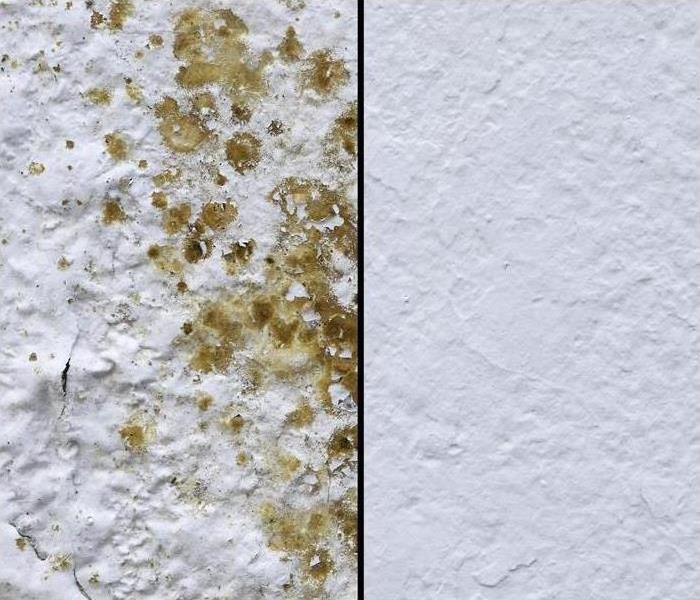What You Shouldn't Do When You Find Mold in Your Home
7/4/2018 (Permalink)
 SERVPRO of North Hollywood is available to help if you have mold on your walls in your home or business.
SERVPRO of North Hollywood is available to help if you have mold on your walls in your home or business.
Mold. Just the word can make a homeowner's skin crawl with the idea of the fungi growing in and around your home. Mold, of course, is not all bad. We eat some molds and fungi, such as mushrooms. Mold also helps fertilize soil by breaking down dead vegetation. It even helps cure illnesses with its role in the production of antibiotics, including penicillin.
But when left to grow unabated in your home, the CDC notes that exposure to dampness and mold can cause health effects.
So when you discover mold growing where it shouldn't, there's one thing you should do: call SERVPRO of North Hollywood. Our team of highly-trained and specialized restoration technicians will contain the infestation, remove the mold and contaminated materials, cleanse and restore your home "Like it never even happened."
Should you decide to DIY the problem, however, here are a few things you should not do to clean up mold in your home.
Don't Wait
An outbreak of mold can spread quickly. Mold spores are carried throughout your home via heating, ventilation and cooling systems (HVAC). Once they land, staining and further spreading begins immediately. Within 24-48 hours, a small concern can become a huge problem if left untreated.
Don't Use Bleach
Bleach is a common treatment because it does, indeed, kill mold if it comes in contact with it. On non-porous surfaces such as a bathtubs or sinks, bleach may do an adequate job. However, bleach does not soak into porous materials such as wood or drywall. Because bleach kills mold by contact, any mold that takes root deeper beyond your seemingly clean surface will survive to spread another day.
Worse, because bleach is mostly water which is then usually further diluted, unless you use the kind of state-of-the-art dryers we have here at SERVPRO of North Hollywood to completely dry the treated area, you may be inviting a new infestation to grow in place of the old one. Remember, mold LOVES water.
Don't Cover Up the Problem
Given the plethora of mold resistant paints and primers on the market, it may be tempting to slap a coat over the offending area and just cover up the problem. First, there is a difference between a mold resistant coating and a mold killing one. Mold resistant paints and primers don't kill existing mold, but they can help prevent new mold outbreaks from taking root. And while mold killing primers may work on the mold residing on the outer wall, there may be an infestation within the walls that goes untouched. Most importantly, even a good coat of paint fails to address the underlying problems with moisture or water damage that caused the mold.
In short, while DIY options are available, SERVPRO of North Hollywood's seven step mold remediation process, certified technicians and specialized equipment can lessen the mold damage, limit further damage and reduce the remediation costs of a mold infestation. If you've got mold, don't wait, call SERVPRO of North Hollywood today.






 24/7 Emergency Service
24/7 Emergency Service